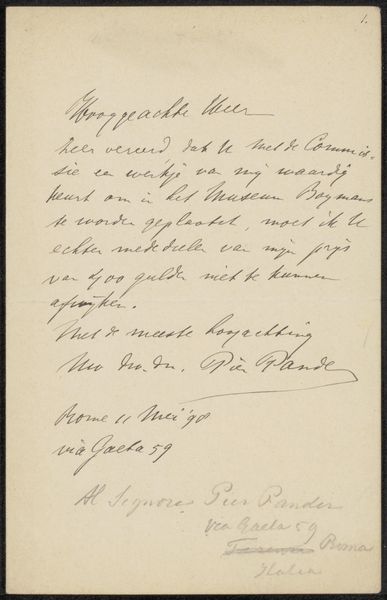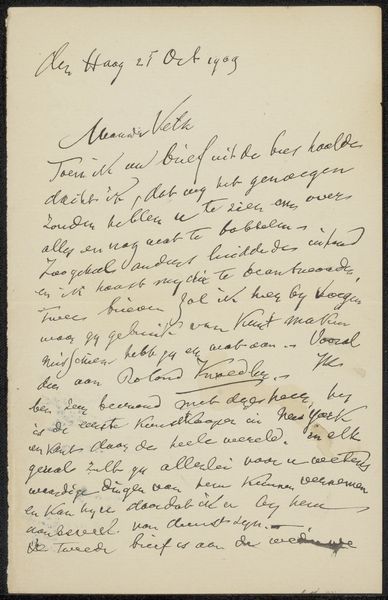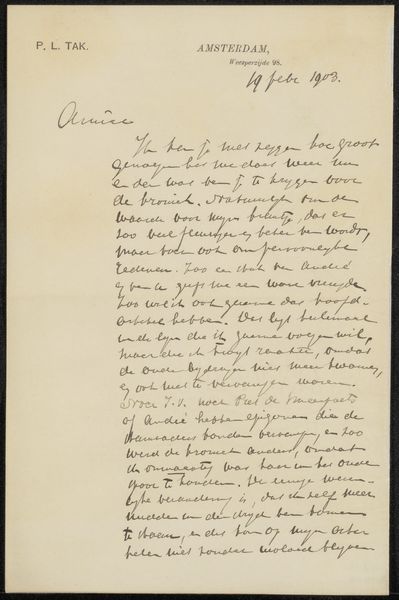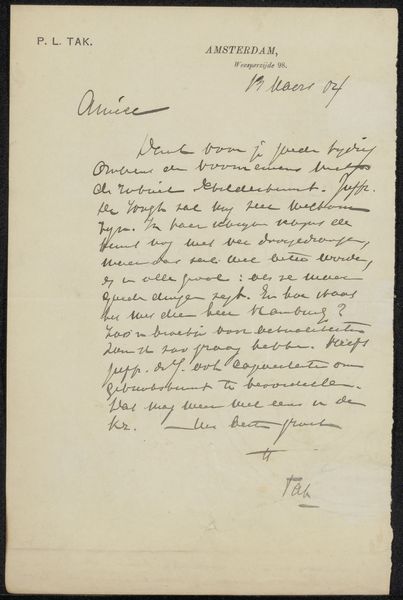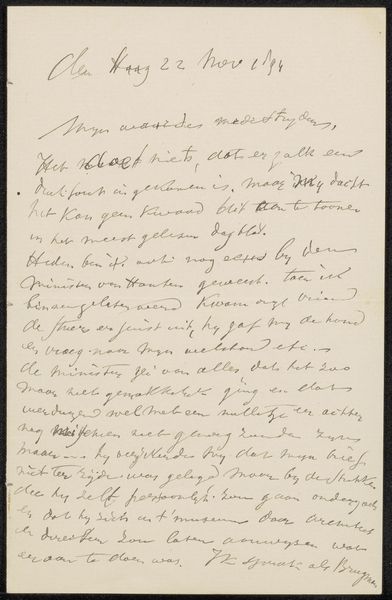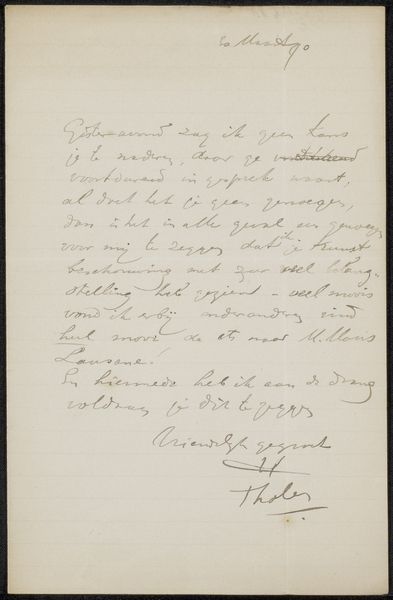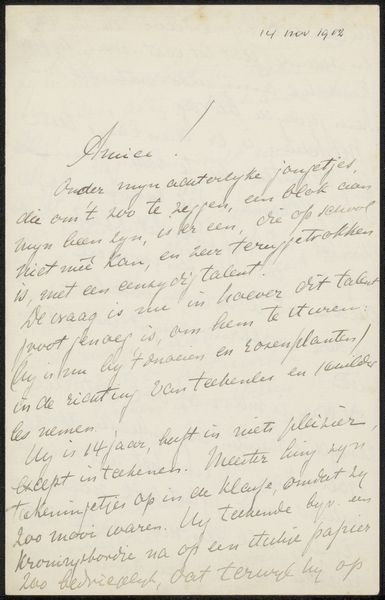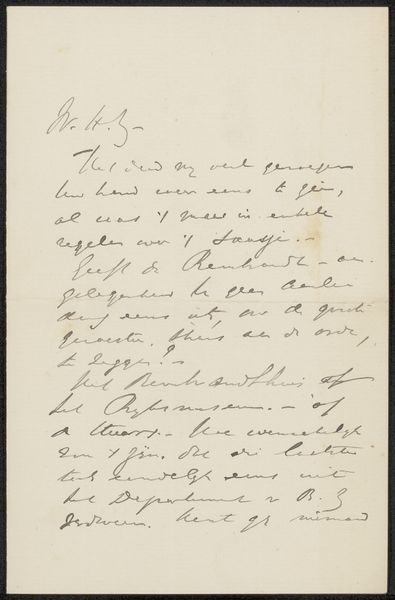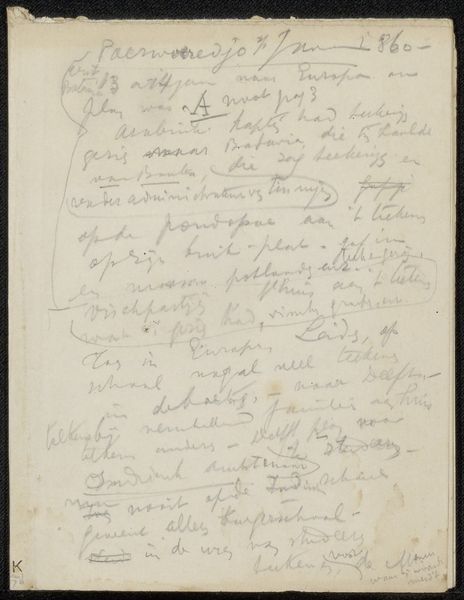
Copyright: Rijks Museum: Open Domain
Editor: This is a drawing from Jozef Israëls, a letter actually, possibly from 1897, titled "Brief aan Jan Veth." It's pen and ink on paper and, honestly, my first thought is…I can’t read it! It feels so personal, like eavesdropping. How should we even interpret this? Curator: Indeed. Looking at a piece like this, we must consider the social and cultural dynamics at play. Who was Jan Veth, and what role did he play in Israëls’ world? Think about the Dutch art scene at the fin de siècle, and how artists like Israëls were negotiating Realism with emergent Impressionistic trends. This isn’t just a personal note, it's a glimpse into the artistic network and intellectual exchanges of the time. How might the contents of this letter impact Israëls' career and public reception? Editor: That's fascinating. I was focused on the private nature, but you're right, it was intended for another artist who might understand the context implicitly. So, its impact relies on that external audience. It shifts how I see it completely. Curator: Exactly. It reflects a period where artistic reputation was built not just on finished artworks but on these dialogues, these exchanges within a specific art world. A letter becomes part of an artist’s public persona. Now, how does the act of placing this intensely personal interaction within the very public context of a museum change our understanding? Editor: That’s something to think about. Taking into account social contexts is a very helpful strategy, because, by itself, a historical artifact remains meaningless. Thanks for shedding light on the nuances behind this written correspondence. Curator: My pleasure! It’s all about perspective and connecting the artwork to its world, its purpose.
Comments
No comments
Be the first to comment and join the conversation on the ultimate creative platform.
